
 |
EDINBURGH UNIVERSITY COLLECTION OF HISTORIC MUSICAL INSTRUMENTS |
The Exhibition was held in conjunction with the publication of the book City of Edinburgh Band 1925-2005 by Eugenia Mitroulia.
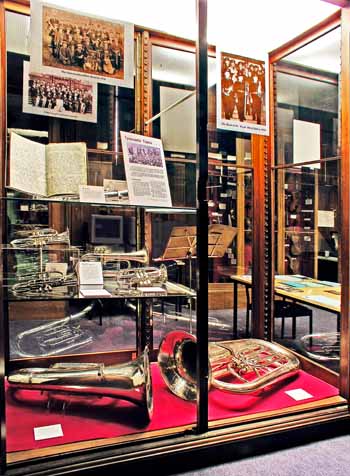 |
The City of Edinburgh Band was a brass band founded by the former
members of the Grassmarket Silver Band. The band was never directly
sponsored by the city and was never under the control of any company or
other organization. The initiative of its members and their love for
music was the band's driving force.
From the early days the band was very active in the contesting field, and its highest achievement came in 1930, the year when they won the first place in the contest of the Scottish Amateur Band Association and were the Scottish Champions. Another important aspect of the band's activity was the involvement and interaction with the community. It gave its own members both entertainment and education and provided free entertainment for the community, and also involved the members' families in its various activities. Most of the band's surviving instruments were donated to the Edinburgh University Collection of Historic Musical Instruments in 2005. Although no longer a completely full set, they provide an excellent picture of the highest quality instruments available to British brass bands in the early 1960s, just before most of these bands changed to a lower pitch standard and to wider bore instruments. Unusually, they have never been modified to play at low pitch. As is normal practice in brass bands, the instruments were owned by the band rather than the players. |
|
Constitution
This is the third edition of the band's constitution, compiled in
September 1950. It also contains an application form that prospective
members would submit.
Attendance Book The attendance book records the band members' turnout for rehearsals
in the years 1950-51 and 1967-1981. Occasionally it contains lists of
engagements.
| 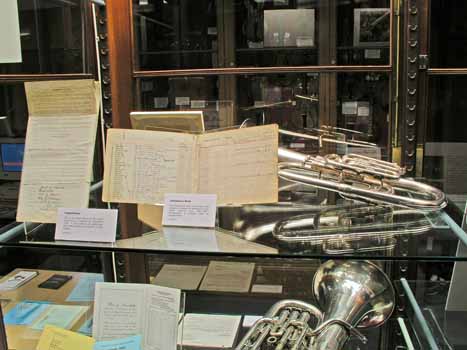 |
|
BB-flat Bass
(Boosey & Co, London, 1924)
The so-called 'Monster' model had three compensating 'Solbron' piston
valves. The Patent Compensating Piston arrangement of Boosey & Co,
dealt with the intonation problems created when more than one valve are
used simultaneously. Additional short lengths of tubing come into
operation only when the 1st or 2nd valves are used in combination with
the 3rd.
| 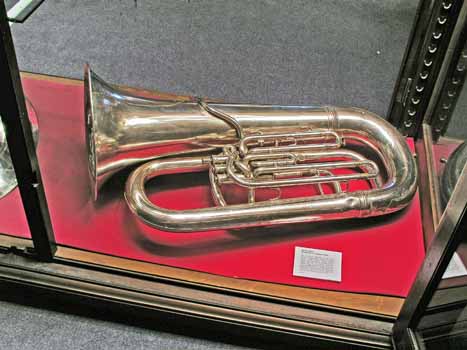 |
|
B-flat Cornet
(Boosey & Co, London, 1925)
This cornet is equipped with the then 'New Valve Action' and with
Boosey's 'Solbron' valves. The new valve action, patented by Boosey &
Co, was lighter and less noisy. The valve instead of resting on an open
coiled spring is suspended from a closed one, with the result that the
spring is always straight and thus less noisy. Solbron was a new bronze
alloy used by the company for piston valves and trombone slides.
Solbron valves were lighter and the anti-friction qualities of the metal
resulted in the valves not being "sticky".
Cornet in B-flat (Besson & Co, London, c 1921) This is a 'CLASS A' cornet of the 'Prototype' system. Besson
instruments of this class had the highest quality finish and the longest
guarantee (10 years). According to the company's trade catalogues,
'Prototype instruments' were perfectly in tune and at the high
"Kneller Hall" pitch (A 452.5Hz). Unlike most other bands,
the City of Edinburgh Band never abandoned high pitch. Eight cornets in
B-flat were included in the instrumentation of the test pieces.
Soprano cornet in E-flat (Besson & Co, London, c 1919) Promoted by Besson as an instrument with beautiful, rich tone, it was
also marketed as an easy to blow instrument. Its very nice engraving
resulted in a higher cost. Only one soprano cornet is required for the
instrumentation of the test pieces and concert music.
| 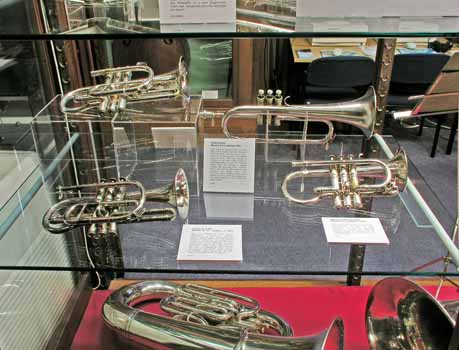 |
|
Side Drum
(Boosey & Co, London, 1921-25)
Bass drum (Premier, probably circa 1960) Until fairly recently, percussion instruments were not part of the
instrumentation of the test-pieces for brass band contests. However,
percussion instruments were used for marching and other performances.
These drums and a pair of cymbals (now missing) formed the band's
percussion group.
| 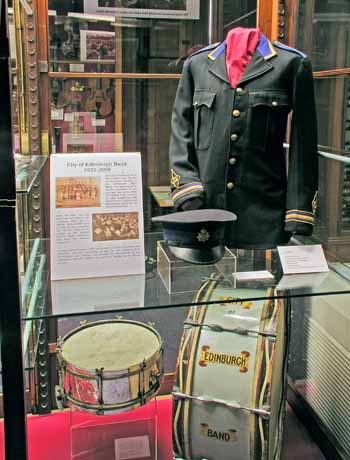 |
|
Tenor horn in E-flat
(Boosey & Hawkes, London, 1962)
The instrumentation of contest test-pieces includes 3 tenor horns.
This is an 'Imperial' model which at the time of its manufacture was the
highest quality available.
Flugel horn in B-flat (Boosey & Hawkes, London, 1959) Flugel horns, only one which of is scored for in a British brass
band, are known in other European countries as valved bugles or
contralto saxhorns. Scholars report that they started being sold in
Britain at about 1846 with these names. However, by about 1857 they
were already known in brass bands as flugel horns.
| 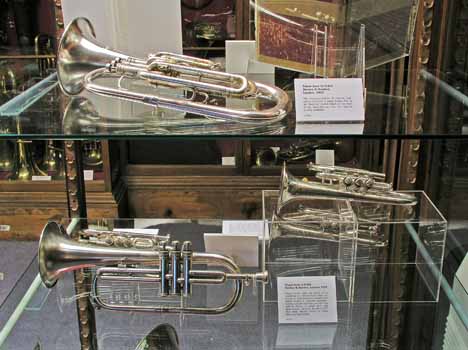 |
|
Baritone in B-flat
(Boosey & Hawkes, London, 1962)
An 'Imperial' model with compensating pistons for good intonation and
flexibility. There are parts for two baritones in brass band scores.
Honours Certificate Awarded to the band's trombone quartet at the Border Musical
Competition Festival in 1972. Lent by former band member Arnold Myers.
|  |
|
Tenor trombone in B-flat
(Boosey & Hawkes, London, 1955-56)
An 'Imperial' model, marketed as the professional model of Boosey &
Hawkes. This was regarded as a wide-bore instrument, but from today's
perspective it is seen as medium-bore, transitional between the
narrow-bore French model trombone used in bands for 100 years and the
wide-bore instruments of today. Two tenor trombones was written for in
test-pieces. Lent by former band member James Flockhart.
| 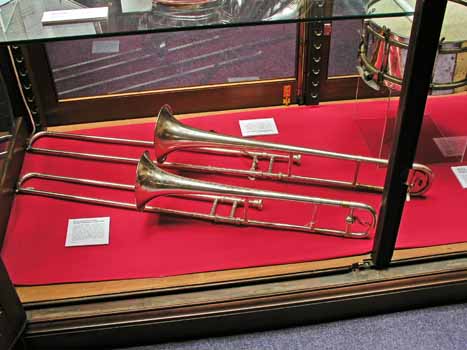 |
|
Bass trombone in G
(Boosey & Hawkes, London, 1962)
The traditional British bass trombone in G was generally used
orchestrally until the 1950s, and in brass bands until the 1960s. It
has a brighter sound than contemporary bass trombones, and is equipped
with a handle that enabled the player to reach the furthest slide
positions.
| 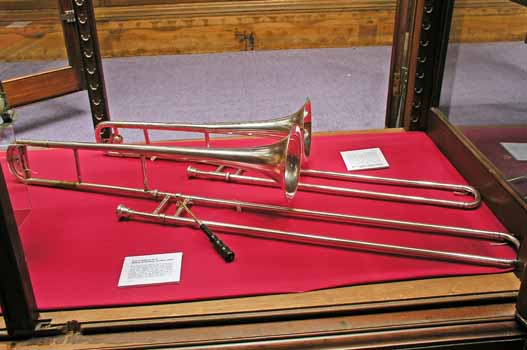 |
|
Programmes
Various contest programmes of the period 1969-1972.
Euphonium in B-flat (Boosey & Hawkes, London, 1961) This is an 'Imperial' model, with 4 compensating piston valves. It
was the top-of-the-range model at the time it was made. Lent by former
band member James Easton.
| 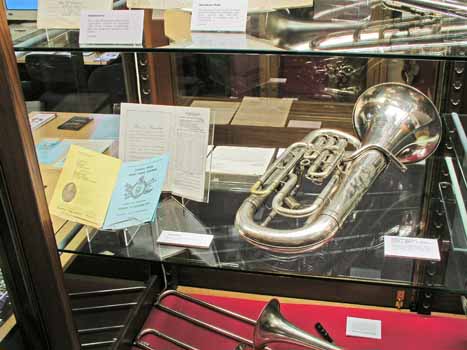 |
| Uniform
Band uniform worn before 1972. Lent by former band member Arnold Myers.
|  |
| Letter
Letter from Norman Wilson, the band's Honorary Secretary, to the Town
Clerk applying for funding for the purchase of new instruments.
| 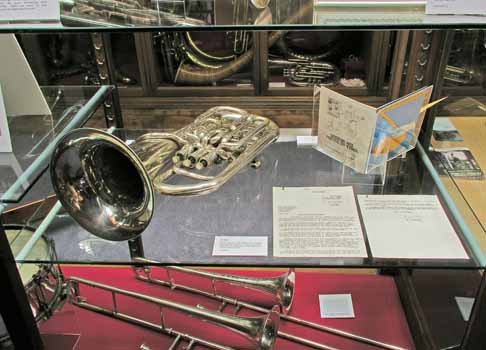 |
|
EE-flat Bass
(Boosey & Co, London, 1923)
This is an 'Imperial' model, with three compensating 'Solbron' piston
valves. It was promoted by Boosey & Co. as an instrument which,
although in E-flat, had the quality of tone of the BB-flat 'Monster'
bass. Its bore diameter at the valves is the same as in a BB-flat
instrument.
| 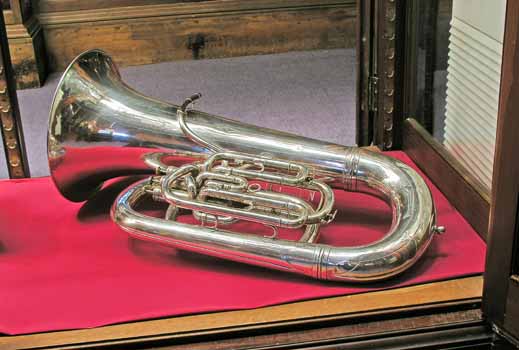 |
|
Minute Book
The Minute Book contains the minutes of the various band and
committee meetings of the years 1932-1980. Here the band members, after
having severed the connection with the Supporters Club in a previous
meeting, decided the formation of a new Supporters Club that "would
run from the band for the band".
| 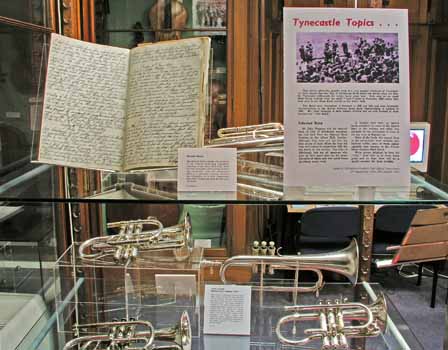 |
|
Richard Wagner, Tannhauser
The Band's library included this arrangement by the famous band trainer John Gladney (1839-1911), the "father of the brass band". It is a selection from Wagner's opera, Tannhauser. As was usual the conductor used the solo cornet part rather than reading from a full score. |  |
 | 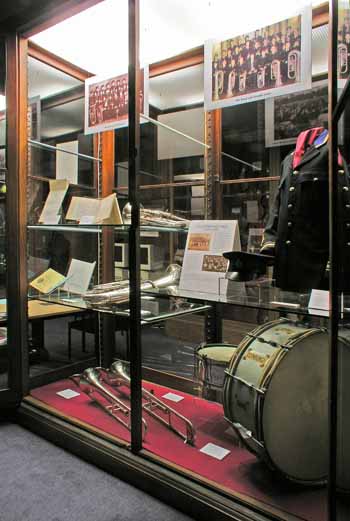 |
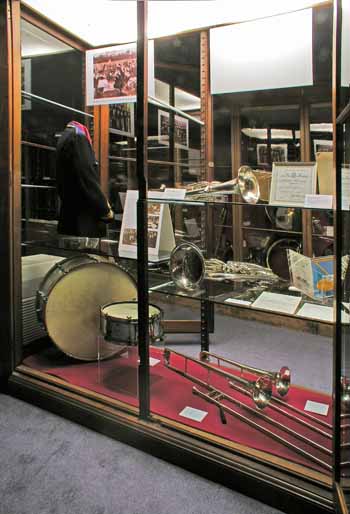 | 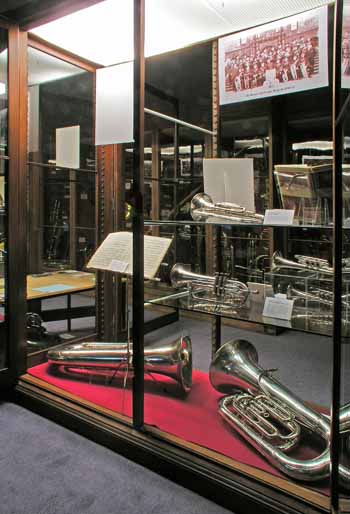 |
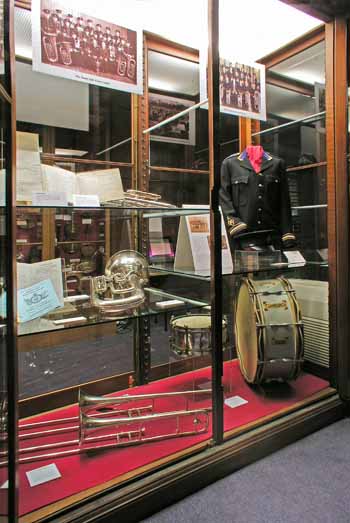 | Special thanks to
Scottish Museums Council City of Edinburgh Band former members Malcolm Hobson, Choice Recordings Dr Raymond Parks BBC Scotland Archives Alex Knight, Club Archivist Heart of Midlothian Football Club Photography for this web page
|
See details of the book City of Edinburgh Band 1925-2005 by Eugenia Mitroulia.
All material on this website is
copyright.
© Edinburgh University Collection of Historic Musical Instruments, 2006, 2008.
This page updated: 13.6.08; re-published 13.2.13